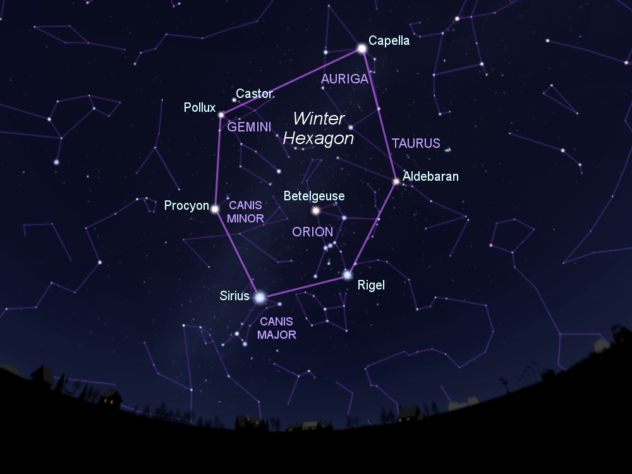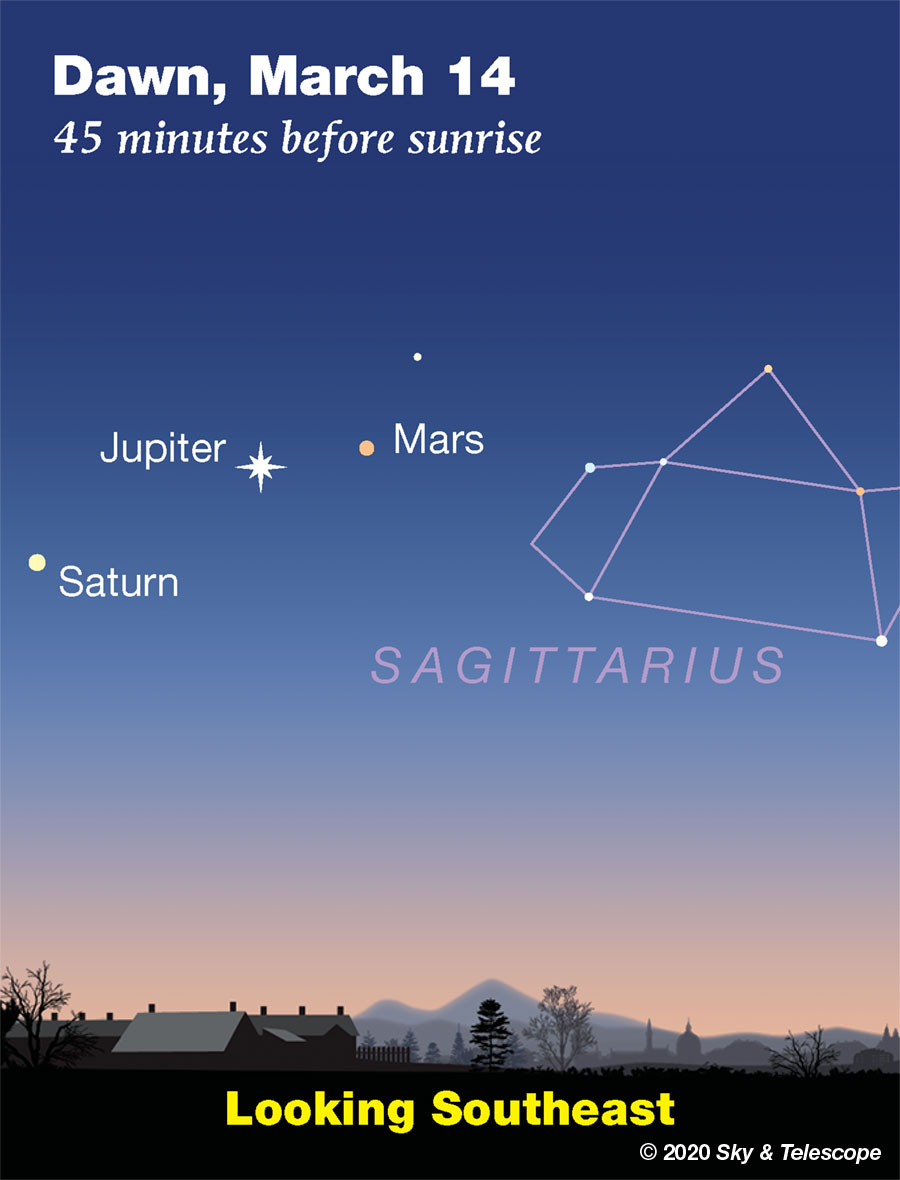
EXPLORING THE WINTER CONSTELLATIONS, PART 2
For the last two months, I discussed Orion and his hunting dogs. For this month, I will cover the northern half of the Winter Hexagon, shown above, in the image from Sky & Telescope magazine. With the “spring forward” change to Daylight Savings Time that occurs on March 8, the sky will not get dark until after 8 PM. Stargazers like me are not necessarily fond of this.
Once the sky is dark enough after dusk, it will be easy to spot Orion in the south to southwestern sky, with the rectangle of bright stars surrounding the close group of stars in his belt. Draw a line from Rigel to Betelgeuse and extend it to the upper left, and you come to Castor and Pollux, the famous Gemini Twins of mythology. The stars of Gemini can be seen below Castor and Pollux, and if you have a dark enough sky, you really can make out a pair of matchstick men. In mythology, Leda was the wife of Tyndareus, King of Sparta, but was seduced by Zeus, and gave birth to the twins. It was thought that due to their different fathers, Castor was mortal and Pollux immortal and thus slightly brighter in the sky. They shared many adventures and upon Castor’s death, both were placed in the sky, side by side. As March nights pass, Earth’s rotation will cause Orion to tip over, lower and lower in the west to southwest, while Gemini stands straight up and down high in the west.
Almost overhead at dusk in early March, and high in the west to northwest later in the month or later in the evening, are the stars of Auriga, the Charioteer. Auriga is thought to represent Erichthonius, who invented the four horse chariot that helped him win a battle and become King of Athens. The figure of Auriga represents his head and cap. The bright star Capella, sixth brightest in the entire sky, dominates the constellation.
If you draw a line through Orion’s belt towards the right, it points to the bright orange star Aldebaran, the eye of Taurus, the Bull. The horns of the bull are easy to make out in the sky, using the map above, but the bull’s hindquarters are very dim, as if they were barely visible underwater. Some say that this is because Taurus actually represents a handsome white bull that Zeus transformed himself into, in order to captivate the beautiful Europa. He tricked her into jumping on his back and then swam off. They bore three children together.
If you connect all of the bright stars I have mentioned for the last three months (see the January and February blogs), you will see that Pollux, Castor, Aldebaran, Rigel, Sirius, and Procyon all make up the Winter Hexagon, with Betelgeuse shining more or less in the middle.
QUICK PLANET ROUND-UP
Venus is at the peak of a great evening appearance, not setting in the west to northwest until after 11 pm this month. As can be seen in the Sky & Telescope image below, Mars, Jupiter, and Saturn are all visible before dawn, but with the time change, it is not that early, around 6 am. Jupiter is far and away the brightest, with Saturn a distant second and Mars a little dimmer. Mars moves the fastest of the three and will pass closely by Jupiter on March 20 and the Saturn on the 31st. All three will gradually rise earlier and eventually move into the evening sky this summer and fall, with Mars attaining unusual brightness and Jupiter and Saturn drawing together in a “Great Conjunction.” Some things to look forward to!

